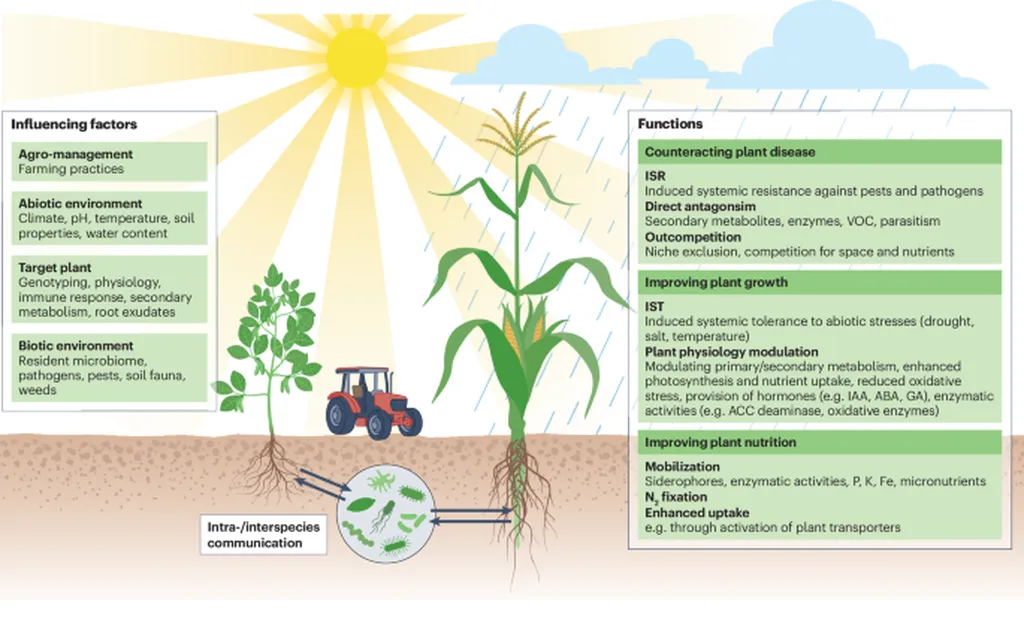In the intricate dance of plant survival, a phenomenon known as allelopathy plays a pivotal role, where plants release chemicals to inhibit the growth of their neighbors. This complex interaction, governed by the soil microbiome, is the focus of a recent review published in the Annals of Microbiology (Annales de Microbiologie), led by Ayomide Emmanuel Fadiji from the Hawkesbury Institute for the Environment at Western Sydney University. The research delves into the dynamics of soil microbiome and allelochemical interactions, shedding light on a process that could revolutionize sustainable agriculture and, by extension, the energy sector.
Allelopathy, a form of interference competition, is a strategy employed by plants to gain a competitive edge in resource-scarce environments. “Allelopathic plants exude cytotoxic substances into their environment,” explains Fadiji, “These chemicals can directly obstruct access to resources, influencing the growth and survival of neighboring plants.” However, the story doesn’t end with the release of these chemicals. The soil microbiome, a complex ecosystem of microorganisms in the rhizosphere, can break down, modify, or even amplify these allelochemicals, modulating their effects.
The review highlights both beneficial and detrimental relationships influenced by these interactions. For instance, while some microbes can degrade allelochemicals, rendering them ineffective, others can enhance their potency, creating a complex web of interactions. “Understanding these interactions is crucial for developing sustainable agricultural practices,” says Fadiji, “By harnessing allelopathic interactions, we can improve crop resilience and enhance ecosystem stability.”
The research also explores novel methodologies, such as metagenomics and stable isotope probing, which enhance our understanding of these intricate interactions. These advanced techniques allow scientists to delve deeper into the soil microbiome, unraveling the mysteries of allelochemical dynamics.
The implications of this research extend beyond agriculture, reaching into the energy sector. Sustainable agriculture practices can lead to more efficient land use, reducing the need for deforestation and land clearing for agricultural purposes. This, in turn, can help mitigate climate change, a critical issue for the energy sector. Moreover, understanding allelopathy can aid in the development of biofuels, as certain allelochemicals can be harnessed for energy production.
However, the review also highlights the gaps in our knowledge. “A thorough understanding of how the chemical and physical characteristics of soil affect the stability and efficacy of allelochemicals over extended periods in real-world field scenarios is still lacking,” notes Fadiji. Bridging this knowledge gap is essential for the advancement of sustainable agricultural practices and, consequently, the energy sector.
As we stand on the brink of a new era in agriculture and energy, the insights gleaned from this research could shape the future of these sectors. By understanding and harnessing the power of allelopathy, we can pave the way for a more sustainable and resilient world. The journey is just beginning, and the potential is immense.

